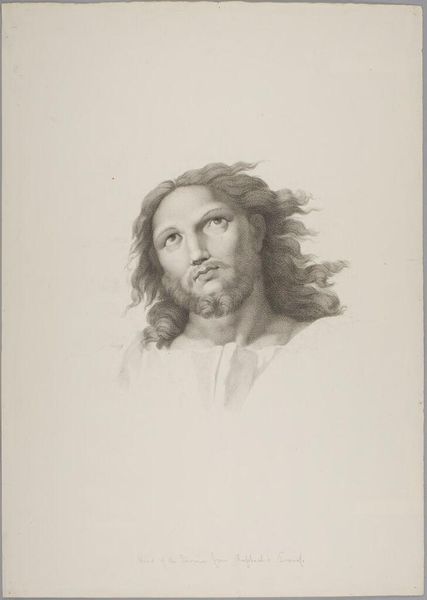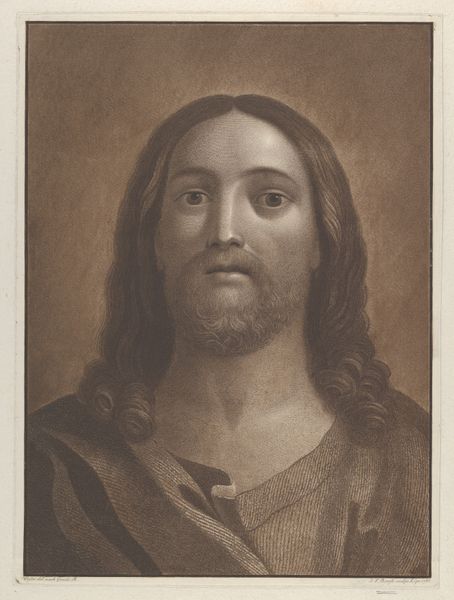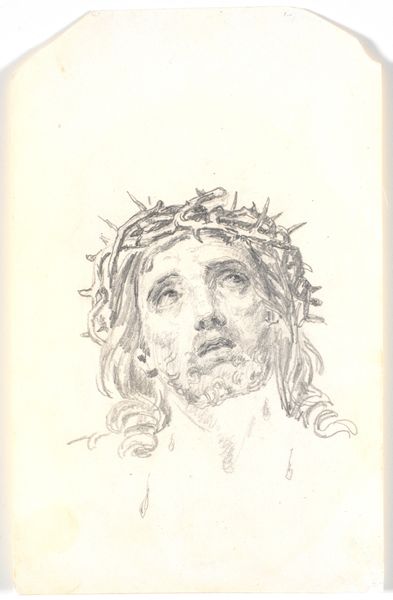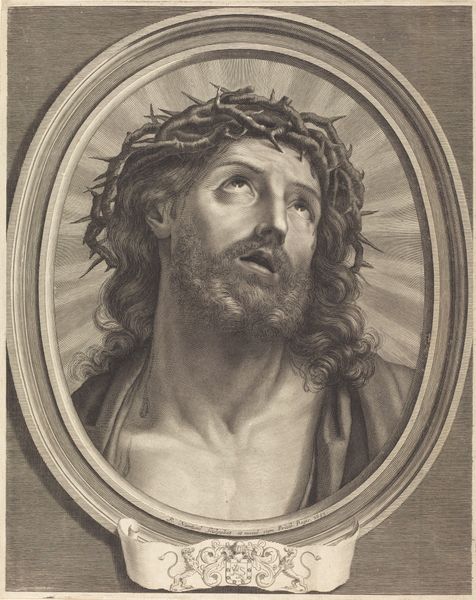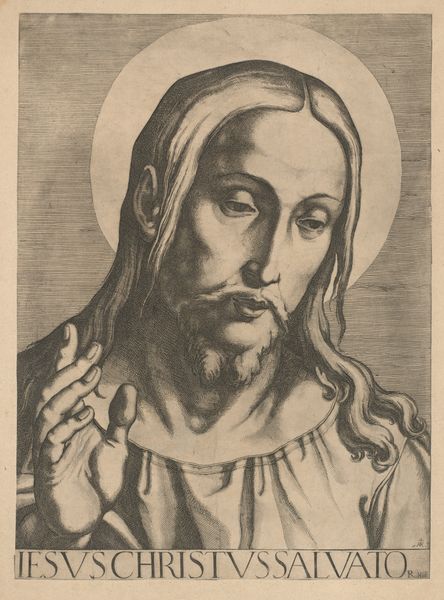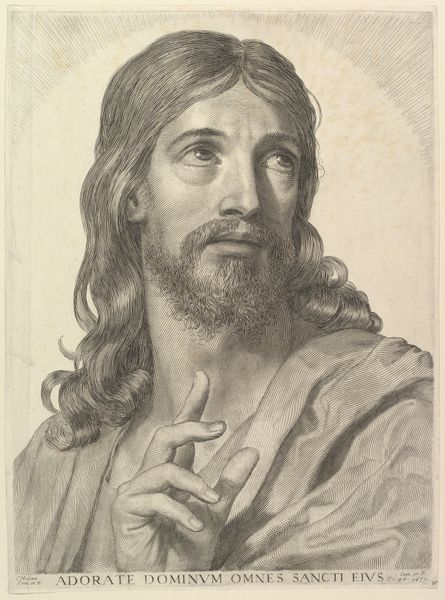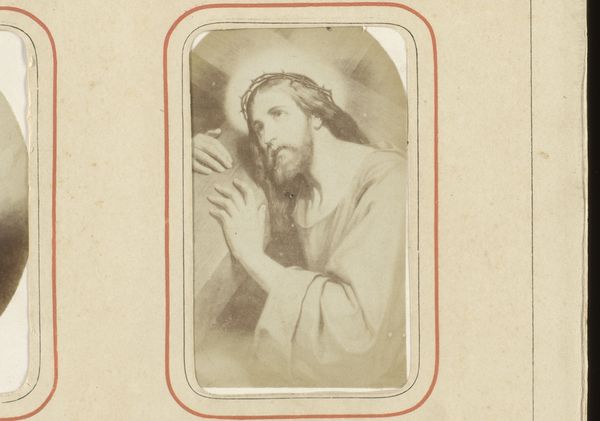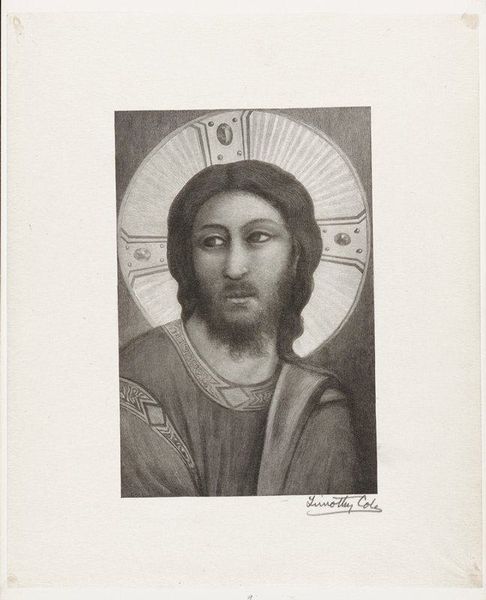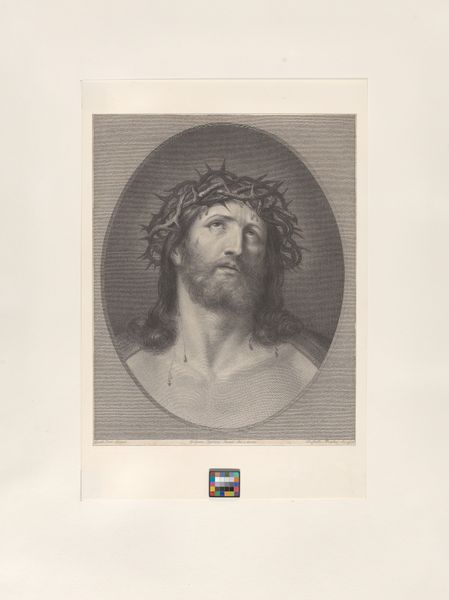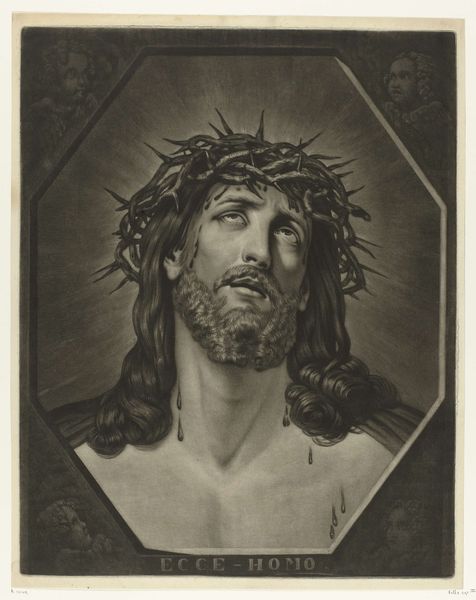
drawing, paper, pencil, chalk
#
drawing
#
paper
#
pencil
#
chalk
#
chiaroscuro
#
academic-art
#
portrait art
#
realism
Copyright: Public Domain
Curator: This is Filippo Agricola’s "Christ's Head," currently housed at the Städel Museum. It's an academic work rendered with pencil and chalk on paper. Editor: My first thought is somber. The muted palette and the downturned gaze give it a melancholic quality. And I find the graphic halo strangely modern. Curator: Agricola, working within the Academic style, certainly aimed for emotional resonance. But what’s particularly compelling here is the interplay of light and shadow – the chiaroscuro technique. Editor: Absolutely, and think about the labor involved! All that delicate hatching to create the gradients in the face and hair, must have been really time-consuming, reflecting a dedication to craft as a form of religious devotion almost. Curator: That is a valid assessment. Now think, what does it mean to represent a religious figure in this way? What role did institutions like the church play in the commission and display of works like these? Agricola lived and worked in a time of change and his depictions would’ve had social impact. Editor: I suppose. It is the tension for me, though, between that hyper-realism achieved with such material labor, and then, those very flat shapes above his head – which seem almost screen-printed, now that you mention it, even though this piece is over a century old. Curator: Interesting. They lend it an ethereal quality, distinguishing him from earthly figures. I believe the artistic institutions demanded an elevated tone, pushing art beyond mere skill toward expressing ideological beliefs. Editor: Maybe so. Regardless, viewing "Christ's Head" now, I'm thinking about the social contexts of portraiture as industry as much as a spiritual image or devotional item. The labor invested reveals so much of its history. Curator: Reflecting on this work, it underscores art's function in reinforcing certain beliefs while offering some artistic individuality, it's amazing how all that gets combined in a single image. Editor: Yes, and reminds us to look carefully at materials and means of production which are often dismissed, when the image speaks louder than it might alone.
Comments
No comments
Be the first to comment and join the conversation on the ultimate creative platform.
